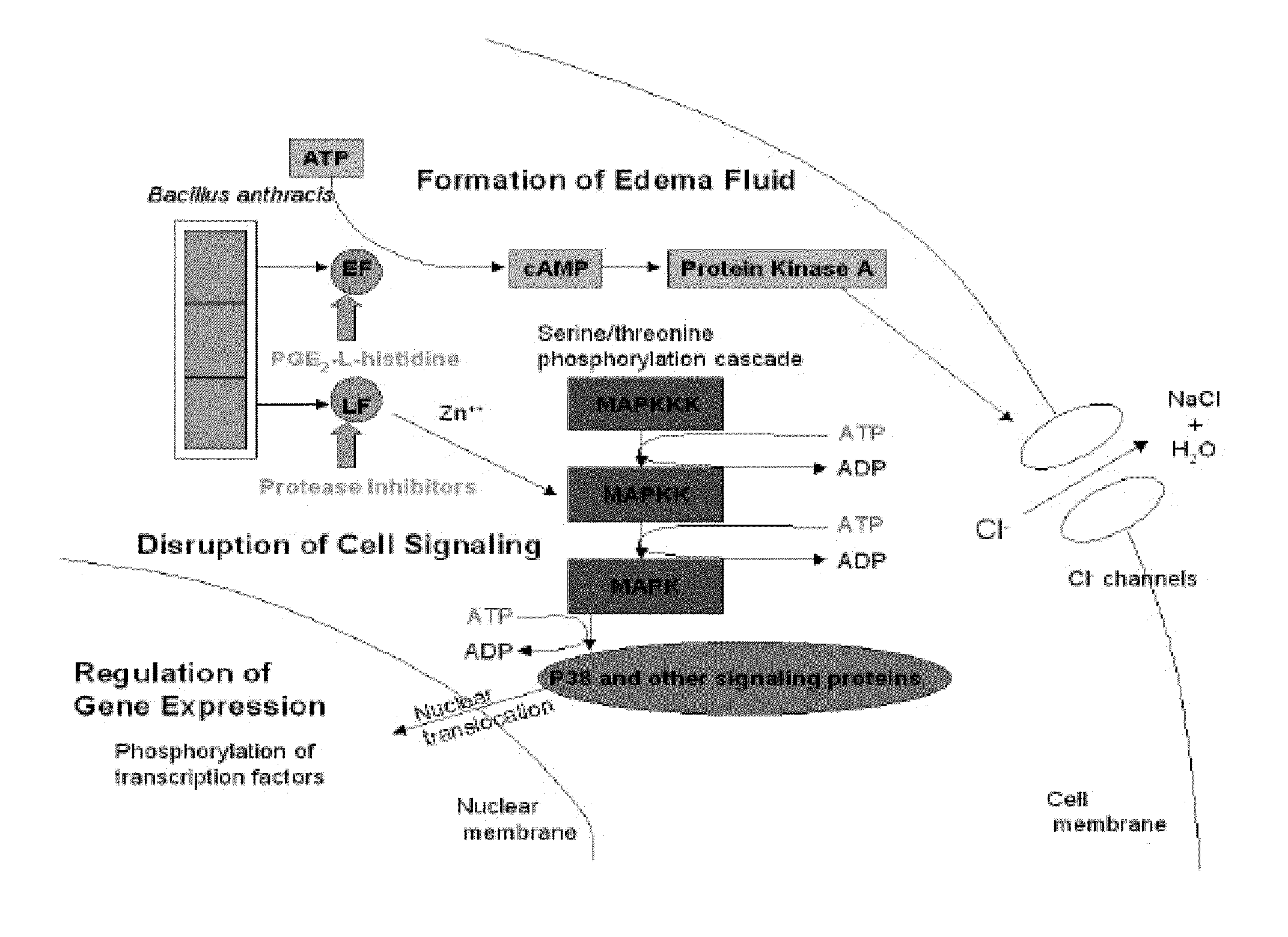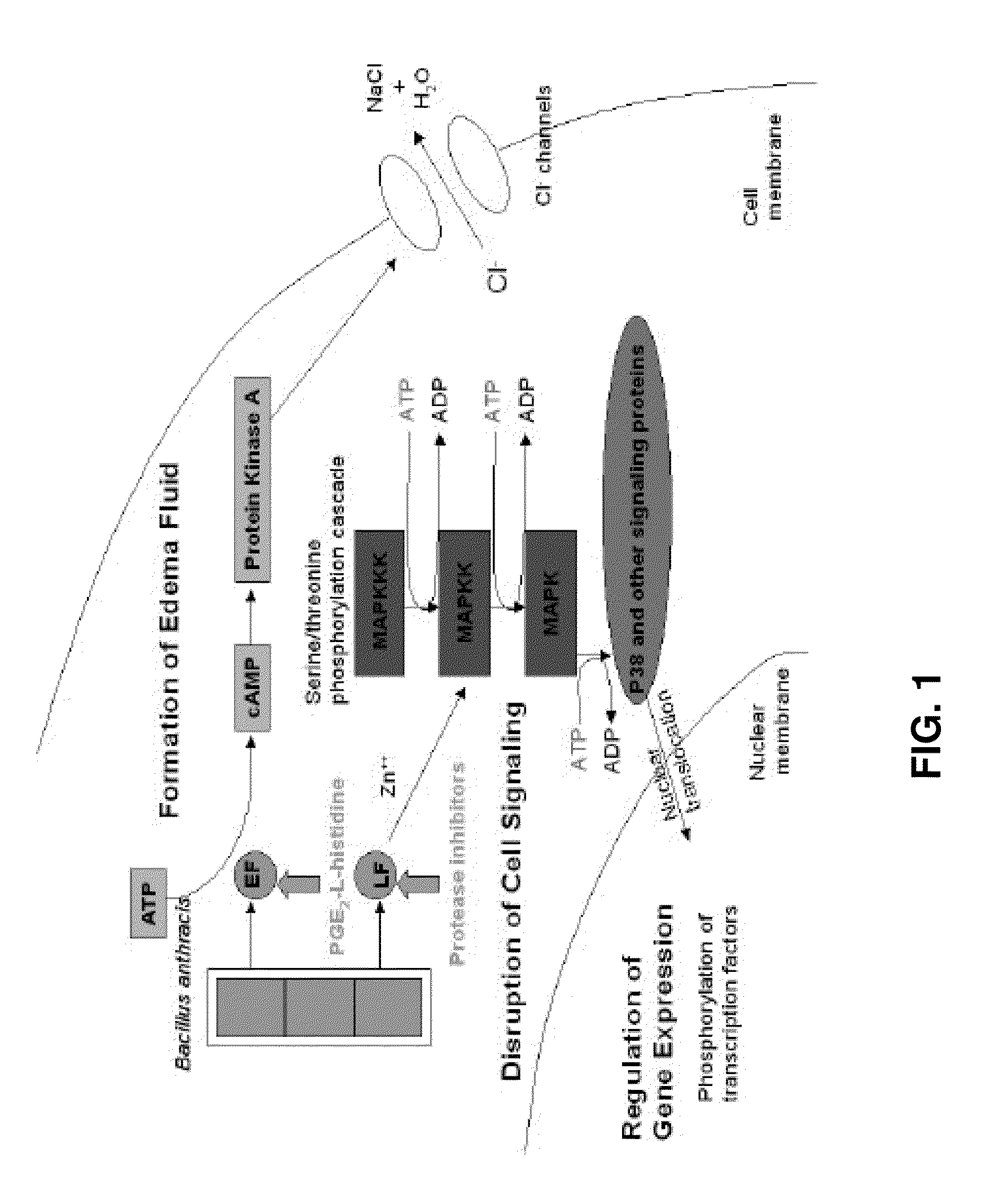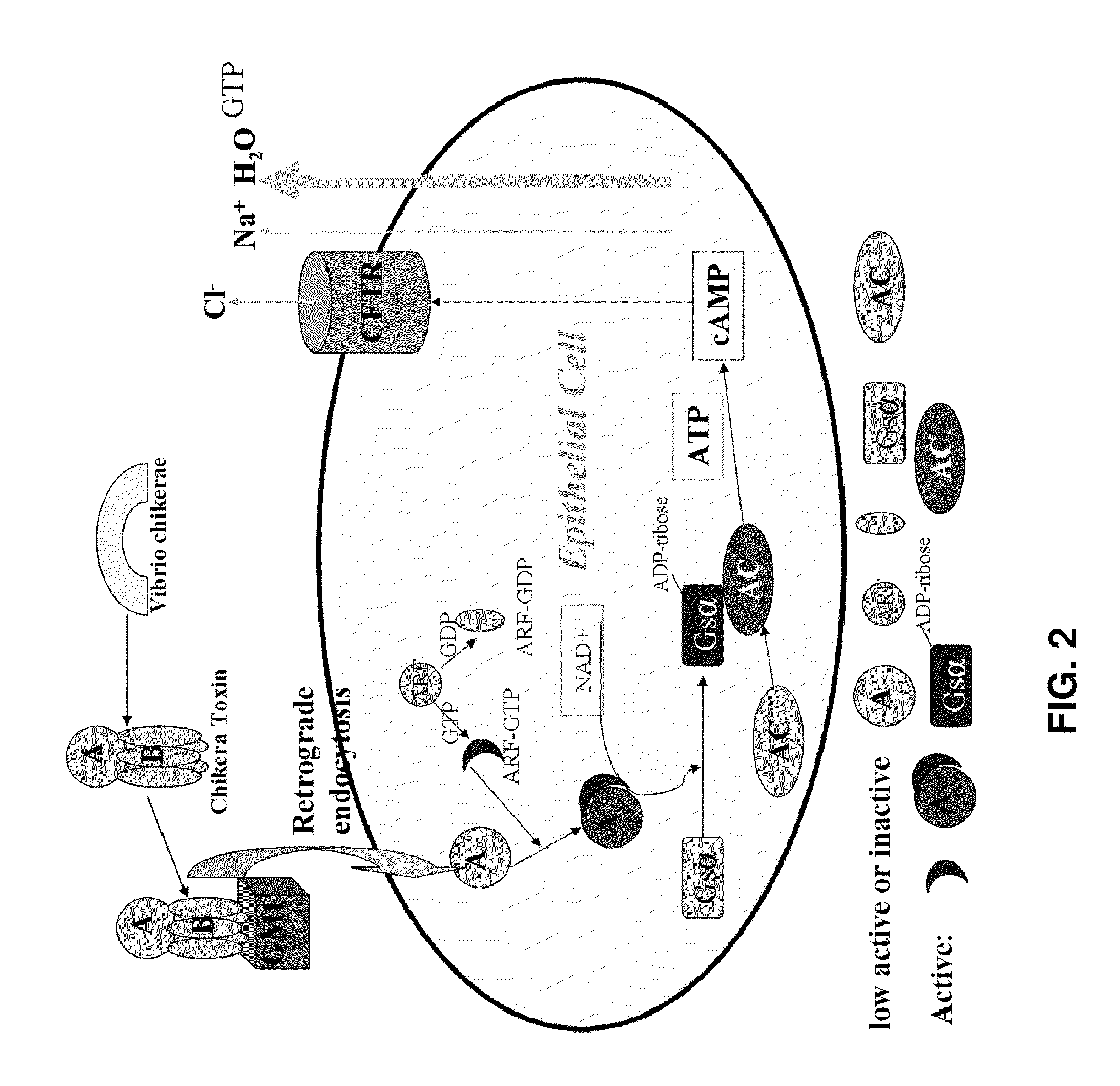Methods and compositions to inhibit edema factor and adenylyl cyclase
a technology of edema factor and adenylyl cyclase, which is applied in the direction of drug compositions, antibacterial agents, biocides, etc., can solve the problems of suppressing the functions of macrophages, limiting the protection of the body, and toxins are lethal, so as to prevent the loss of intestinal fluid. , to achieve the effect of treating and/or preventing intestinal fluid loss
- Summary
- Abstract
- Description
- Claims
- Application Information
AI Technical Summary
Benefits of technology
Problems solved by technology
Method used
Image
Examples
example 1
Protein Database Structures Used and Active Site Regions
[0261]1) 1K90 (Drum et al., 2002): the crystal structure of the adenylyl cyclase domain of anthrax edema factor (EF) in complex with both calmodulin and a non-cyclizable nucleotide analogue, 3′-deoxy-ATP (3′dATP) with resolution 2.75 Å and R-Value 0.225. The non-cyclizable 3′dATP lies at the substrate-binding pocket, which is shown in FIGS. 3(A and E). In 1K90, the metal is Yb3+, a crystallization additive, rather than Mg2+, the presumed physiological metal ion. The one Yb3+ coordinates with 2 negatively charged carboxyl groups from residues Asp491 (Yb—O distance: 2.14 Å, 2.56 Å), Asp493 (2.16 Å, 2.23 Å) and His577 (Yb—N, 2.78 Å) and coordinates with a negative charged oxygen atom from the α-phosphate group of 3′-dATP(Yb—O: 2.38 Å). Besides forming coordinate bonds with Yb3+, the most notable phosphate interactions are made by Lys 346 (which contacts oxygen atoms from all three phosphates, the hydrogen bond distance between Lys...
example 2
Docking Programs and Methods
[0267]1) AutoDock (version 3.0.5) (Brisson et al., 2004; Morris et al., 1996): To set search parameters, the Lamarckian Genetic Algorithm (LGA) was used and the number of GA runs was 200 and population size was 100. The active site was defined using AutoGrid. The grid size was set to 90×90×90 points with grid spacing of 0.375 Å. The center of the ligand from the corresponding crystal structure was set to be the grid box center. The ligand and solvent were removed from the crystal structure and the remaining protein model was used in docking procedure. The best ranked conformation is selected from the conformation with the lowest binding energy. For the Zn ion in 1CJV, its parameters are set to radius, 0.87 Å; well depth, 0.35 kcal / mol and charge: +0.95e.
[0268]2) LigandFit / Cerius2(version 4.10) (Venkatachalam et al., 2003): Procedures are as implemented in Cerius2(version 4.10). The poses are evaluated by DockScore. There are two types of DockScore, one is...
example 3
[0273]Fragment database. The fragment database consisted of 3-D structures (MOL2 files built in SYBYL) of about 60 small molecules, containing hydrogen bond donor / acceptor or hydrophobic moieties, with at most one rotatable bond. These were either common ionizable molecules, or were selected from the SYBYL fragment database.
[0274]HINT score: The Hydropathic INTeractions, or HINT, program (Formabaio et al., 2003; Formabaio et al., 2004; Cozzini et al., 2002) utilizes experimental solvent partitioning data as a basis for an empirical molecular interaction model that calculates free energy scores that were shown to accurately reproduce experimental measurements of binding (Formabaio et al., 2003; Formabaio et al., 2004; Cozzini et al., 2002). “Hydropathic” interactions are non-covalent interactions such as hydrogen-bonding, acid-base, Coulombic, and hydrophobic interactions. The HINT calculation is the summation of hydropathic interactions between all atom p...
PUM
| Property | Measurement | Unit |
|---|---|---|
| temperature | aaaaa | aaaaa |
| ring structure | aaaaa | aaaaa |
| concentration | aaaaa | aaaaa |
Abstract
Description
Claims
Application Information
 Login to View More
Login to View More - R&D
- Intellectual Property
- Life Sciences
- Materials
- Tech Scout
- Unparalleled Data Quality
- Higher Quality Content
- 60% Fewer Hallucinations
Browse by: Latest US Patents, China's latest patents, Technical Efficacy Thesaurus, Application Domain, Technology Topic, Popular Technical Reports.
© 2025 PatSnap. All rights reserved.Legal|Privacy policy|Modern Slavery Act Transparency Statement|Sitemap|About US| Contact US: help@patsnap.com



